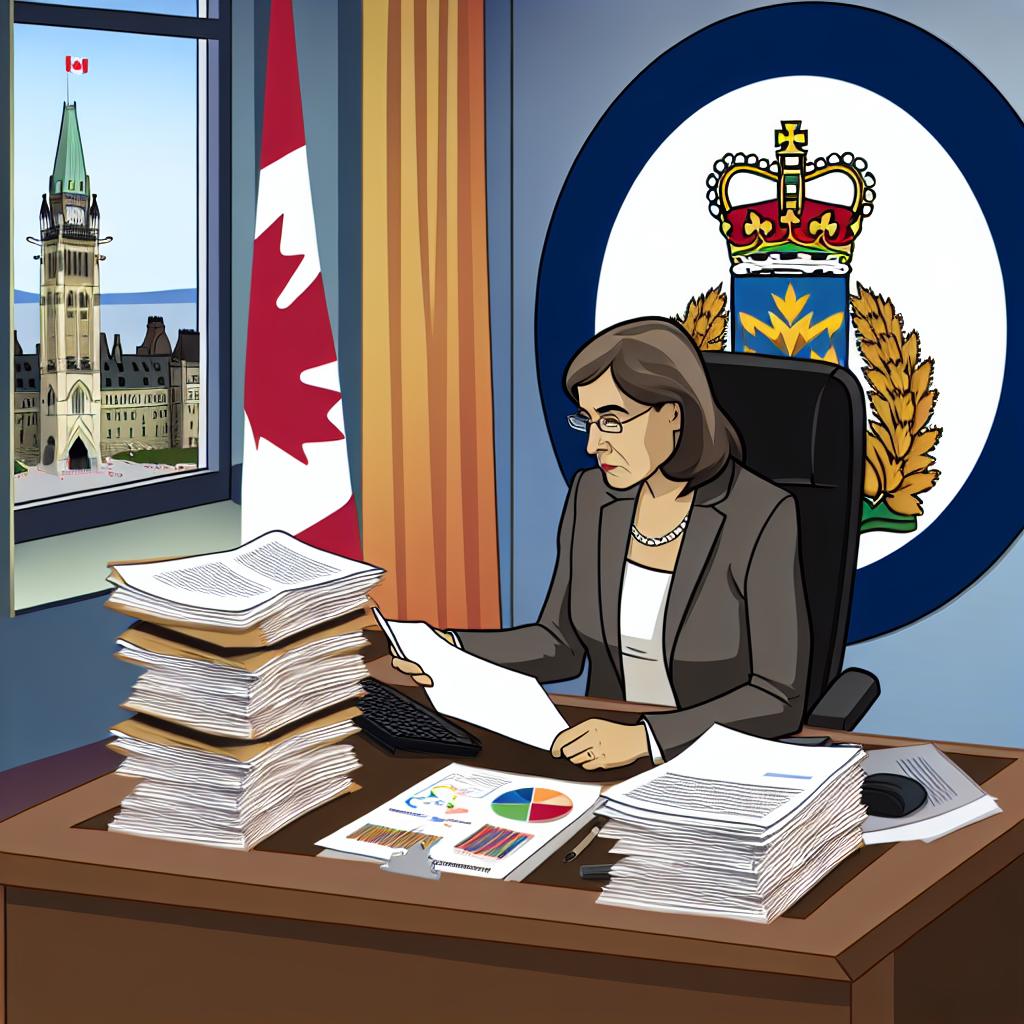Introduction to Ombudsmen
Definition of Ombudsmen
An ombudsman is an independent official who addresses complaints from the public.
They operate in various sectors including government, business, and education.
Essentially, they ensure fairness and transparency in processes.
Role of Ombudsmen in Consumer Protection
Ombudsmen play a crucial role in consumer protection systems.
They investigate consumer complaints and provide resolution paths.
Moreover, they promote accountability among service providers.
Functions of an Ombudsman
- Receive and assess complaints from consumers.
- Conduct investigations into specific issues.
- Facilitate dispute resolution between parties.
Additionally, they recommend changes to improve consumer services.
Benefits of Ombudsman Services
- Increase consumer awareness about their rights.
- Enhance trust in the service sector.
- Improve service standards through feedback loops.
Ultimately, ombudsmen foster a culture of accountability.
Historical Overview of Ombudsman Systems
Origins of the Ombudsman
The concept of the ombudsman originated in Sweden during the 19th century.
This system aimed to protect citizens from governmental abuse.
The first official ombudsman, Johan Alfred Andersson, was appointed in 1809.
He served as a link between the public and the government.
As a result, this role gained prominence and spread to other countries.
Evolution of Ombudsman Systems
Throughout the 20th century, many nations established their ombudsman offices.
Countries such as Finland and New Zealand followed Sweden’s lead.
The United States introduced the concept to address consumer complaints in the 1960s.
This variation focused on promoting consumer rights and protection.
As consumerism grew, so did the need for independent oversight.
Modern Ombudsman Functions
Today, ombudsmen operate in various sectors, from government to corporate.
They help resolve disputes, investigate complaints, and recommend solutions.
This role enhances transparency and accountability in institutions.
Ultimately, ombudsmen defend consumer rights and promote fair practices.
As a result, they significantly impact consumer protection on a global scale.
Types of Ombudsmen: Public vs. Private Sectors
Public Sector Ombudsmen
Public sector ombudsmen play a crucial role in governance.
They address complaints against government agencies.
Unlock Your Career Potential
Visualize a clear path to success with our tailored Career Consulting service. Personalized insights in just 1-3 days.
Get StartedFor example, the Parliamentary Ombudsman investigates public grievances.
This role ensures accountability in public services.
Furthermore, they help enhance transparency in government operations.
Public sector ombudsmen operate independently from political influences.
They serve the citizens by promoting fairness and justice.
Private Sector Ombudsmen
Private sector ombudsmen help resolve disputes between consumers and businesses.
They address issues such as product complaints and service failures.
An example includes the Insurance Ombudsman, who handles insurance disputes.
These ombudsmen provide impartial resolutions for concerned parties.
Moreover, they help to improve industry standards and practices.
Private sector ombudsmen often have the power to recommend actions.
Their work ultimately fosters trust in consumer-business relationships.
Comparative Analysis
Public and private sector ombudsmen serve distinct purposes.
However, both contribute significantly to consumer protection.
Public ombudsmen focus on government accountability.
In contrast, private ombudsmen primarily deal with business practices.
Both types engage in mediation and conflict resolution.
They ensure that consumer rights are upheld across various sectors.
Thus, understanding their roles helps consumers navigate grievances effectively.
Find Out More: How Veterans Affairs Officers Support Canadian Heroes
Key Functions of Ombudsmen
Investigation
Ombudsmen play a crucial role in investigating consumer complaints.
They thoroughly examine the facts of each case.
This process ensures that all sides are heard fairly.
Additionally, they collect evidence and documentation related to disputes.
Through investigations, they identify patterns of misconduct by businesses.
Ultimately, their findings contribute to consumer protection improvements.
Mediation
Mediation is another vital function of ombudsmen.
They facilitate discussions between consumers and service providers.
This neutral approach helps in resolving disputes amicably.
Ombudsmen utilize negotiation techniques to reach favorable outcomes.
Consequently, they foster better communication between parties.
Their mediation efforts often save time and legal costs.
Resolution
Resolution is the final stage in the ombudsman process.
After investigations and mediation, ombudsmen issue recommendations.
These recommendations aim to resolve complaints effectively.
In some cases, they may recommend compensation for aggrieved consumers.
This resolution helps restore consumer trust in services.
Furthermore, it promotes accountability among businesses.
Delve into the Subject: Impact of Technology on the Correctional Officer Profession
Case Studies: Successful Interventions by Ombudsmen in Consumer Disputes
Ombudsman Impact in Financial Services
In 2021, Emily Ramirez faced issues with a loan company.
She was charged unexpected fees without explanation.
After contacting the consumer ombudsman, an investigation began.
The ombudsman quickly found that the fees were improperly assessed.
As a result, the loan company refunded Emily her money.
This case highlights the effectiveness of ombudsmen in financial disputes.
Addressing Complaints in Telecommunications
David Johnson experienced poor service from his internet provider.
Numerous service interruptions frustrated him greatly.
He lodged a complaint with the telecommunications ombudsman.
The ombudsman coordinated a mediation session.
Consequently, the provider agreed to reduce David’s monthly bill.
This intervention emphasizes how ombudsmen can resolve service issues effectively.
Consumer Rights in Retail
Susan Lee bought a defective appliance from a major retailer.
Despite returning it, she did not receive her promised refund.
She reached out to the retail ombudsman for assistance.
The ombudsman intervened and communicated with the retailer.
Ultimately, Susan received her full refund within days.
This situation showcases the power of ombudsmen in protecting consumer rights.
Healthcare Services and Patient Complaints
Michael Brown had issues with his health insurance provider.
The insurance denied coverage for a necessary medical procedure.
He decided to contact the healthcare ombudsman.
The ombudsman reviewed Michael’s case thoroughly.
Eventually, the insurance company reversed its decision.
This case demonstrates how ombudsmen can facilitate health service access.
Consumer Protection in Travel and Tourism
Lisa Nguyen booked a vacation package through a travel agency.
Upon arrival, her accommodations were not as promised.
Frustrated, she reported the issue to the travel ombudsman.
The ombudsman worked with the agency to resolve the complaint.
As a result, Lisa received a partial refund and compensation.
This highlights the role of ombudsmen in the travel sector.
Gain More Insights: Advancement Opportunities for Correctional Officers in Canada

Challenges Faced by Ombudsmen
Limitations of Authority
Ombudsmen often face limitations in their authority.
Many lack the power to enforce decisions against organizations.
As a result, they can only recommend solutions.
This limitation can hinder effective consumer protection.
Cultural and Institutional Barriers
Cultural factors can impact the effectiveness of ombudsmen.
For example, trust in governmental bodies may vary by region.
Additionally, organizations may resist ombudsman findings.
Such resistance can diminish the trust consumers place in these entities.
Limited Resources and Funding
Ombudsmen often operate with limited financial and human resources.
Insufficient funding can lead to understaffing.
This condition often affects their case-handling capacity.
Consequently, they may struggle to meet consumer needs.
Public Awareness and Understanding
Many consumers remain unaware of ombudsman services.
A lack of awareness results in underutilization of these services.
Furthermore, consumers may not understand the ombudsman’s role.
This gap in understanding limits the effectiveness of their work.
Criticism of Effectiveness
Critics often question the effectiveness of ombudsmen.
Some argue that resolutions can be too lenient on organizations.
Moreover, critics highlight that outcomes may vary widely.
Such variability can frustrate consumers seeking justice.
Explore Further: Skills Required to Succeed as an Ombudsman
Impact Assessment: Measuring the Effectiveness of Ombudsman Programs
Understanding Ombudsman Programs
Ombudsman programs serve to protect consumer rights.
They act as neutral parties to resolve disputes.
Moreover, these programs enhance accountability in services.
They facilitate communication between consumers and businesses.
Key Performance Indicators
Effective measurement relies on key performance indicators.
Consumer satisfaction rates are critical metrics.
Additionally, resolution times offer insight into efficiency.
Tracking complaint volumes reveals trends over time.
Surveys and Feedback Mechanisms
Surveys provide direct feedback from consumers.
They assess the effectiveness of resolutions provided.
Furthermore, feedback helps identify areas for improvement.
Case Studies of Successful Outcomes
Case studies illustrate the efficacy of ombudsman programs.
For example, the British Ombudsman has notable success rates.
Consumer confidence significantly increases through effective resolutions.
In turn, this encourages more consumers to voice complaints.
Challenges and Limitations
Despite their effectiveness, ombudsman programs face challenges.
Limited resources can hinder prompt resolutions.
Awareness of these programs remains a significant issue.
Consequently, many consumers may not utilize available resources.
Future Directions for Improvement
Enhancing public awareness will yield positive results.
Collaboration with businesses can help bolster efficiency.
Investing in technology streamlines complaint management systems.
Ultimately, continual assessment ensures these programs evolve.
Future of Ombudsmen in Consumer Protection: Trends and Predictions
Increasing Demand for Ombudsman Services
More consumers are seeking access to ombudsman services.
This trend reflects growing public awareness of rights.
Consumers now understand the value of independent dispute resolution.
Moreover, this demand drives improvements in service quality.
Technological Advancements Enhancing Accessibility
Technology is transforming how ombudsman services operate.
Online platforms facilitate easier consumer access to these services.
Additionally, virtual consultations can address issues promptly.
This evolution also lowers barriers for those in remote areas.
Collaboration with Consumer Advocacy Groups
Ombudsmen are increasingly partnering with consumer advocacy organizations.
These partnerships enhance outreach and education opportunities.
Consequently, this collaboration strengthens consumer knowledge and rights.
Such efforts also improve data collection on consumer complaints.
Data-Driven Approaches to Improving Services
Data analytics play a crucial role in shaping future services.
Ombudsmen will leverage data to identify recurring issues.
Furthermore, this data can guide policy recommendations.
Ultimately, a proactive approach can lead to better consumer outcomes.
Emphasis on Transparency and Accountability
Consumers demand greater transparency from businesses and ombudsmen alike.
This demand encourages ombudsmen to improve reporting practices.
Moreover, accountability measures help build consumer trust.
As a result, ombudsmen become more effective in their roles.
Focus on Cultural Sensitivity and Inclusivity
Ombudsmen must recognize the diverse needs of consumers.
Cultural sensitivity will enhance service delivery effectiveness.
Inclusive practices ensure that every consumer feels represented.
Consequently, this approach contributes to equitable resolutions.
Predictions for the Future
Ombudsmen will likely expand their roles in consumer protection.
We expect to see new specialties emerge within the field.
Additionally, international collaboration will strengthen global practices.
Ultimately, these trends will enhance the overall consumer protection landscape.




